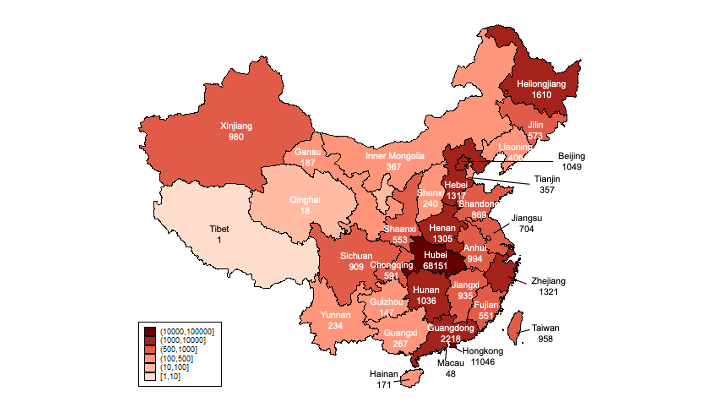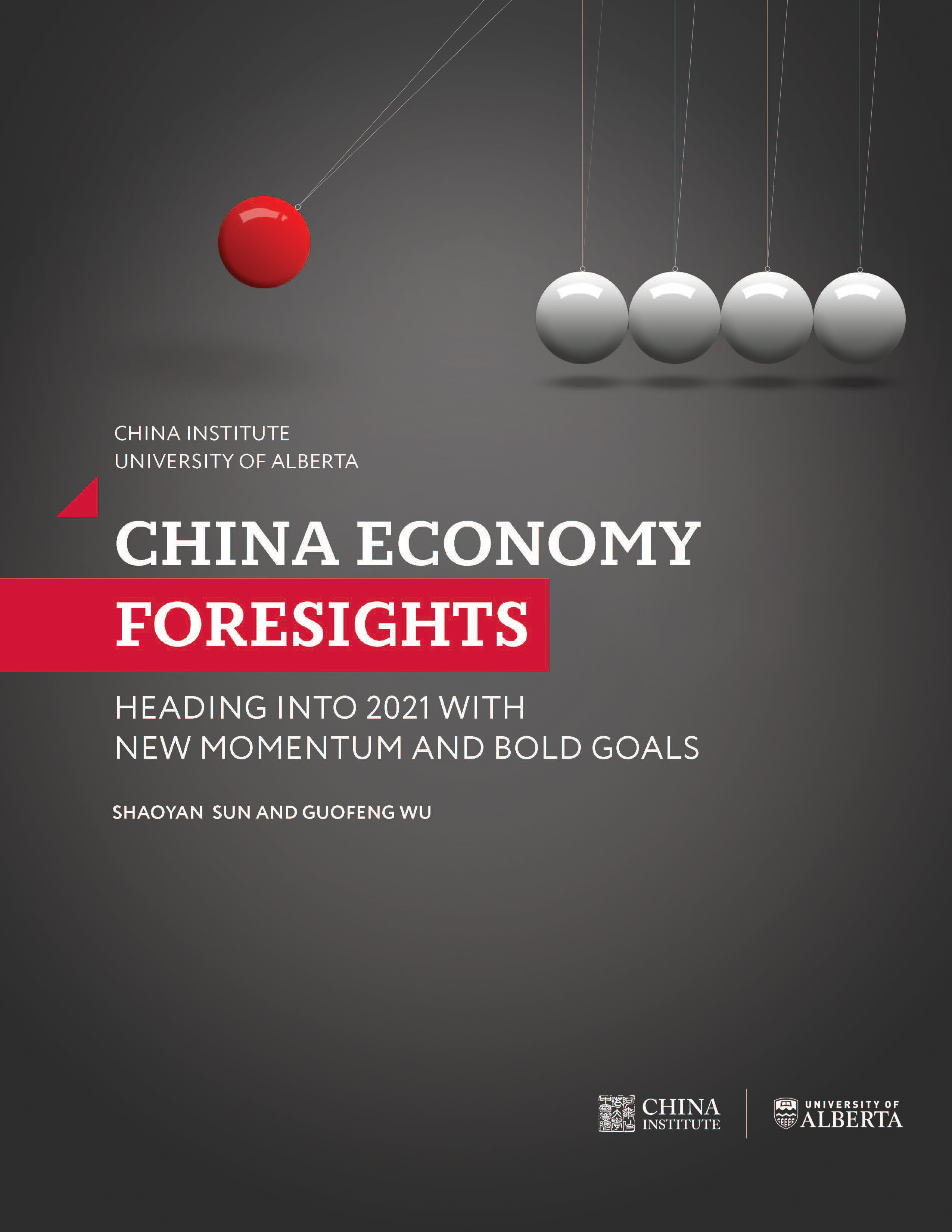China Economy Foresights: Heading into 2021 with New Momentum and Bold Goals
Shaoyan Sun and Guofeng Wu - 22 April 2021
Executive Summary
China's economy grew by 2.3% in 2020, ending the pandemic-battered year with a performance that beat most economists' estimates. As the COVID-19 pandemic broke out in Wuhan, the country reacted quickly to the public health crisis, rolling out policies and regulations aimed at pandemic control, economic recovery, and financial easing. These stimulus measures provided ample capital flow to cushion the wide-reaching pandemic impacts across much of China’s economy. Despite the economic disruptions, China's economy has shown great resilience through a rapid recovery of factory activities and supply chains, followed by the recovery of exports and domestic consumption.
New economic momentum has emerged from China's economic recovery amid the pandemic. The high-end manufacturing, internet-backed new retail, digitalized services, consumption upgrading, and green economy were the top drivers of recovery in 2020 and will likely continue to drive growth in 2021 and beyond.
The economic impacts of the pandemic have raised question regarding the global balance of power and in particular the US-China rivalry across trade, high-tech, and geopolitics in general. Despite its economic recovery success, China is bracing for potential challenges to its growth and has been shifting its focus to internal economic drivers. This substantive change in China's macro-economic policy has made economists speculate about how far the world's second-largest economy can go.
China recently announced a conservative GDP growth target of 6% for 2021, below the estimates of most institutional forecasters. This indicates that Chinese policymakers intend to soften the role of a numeric GDP targets. Steady, sustainable, and high-quality growth, rather than absolute growth, have become China's top economic priorities in its new five-year plan.
As of March 2, 2021, China has reported 101,968 cases of COVID-19, with the first reported case detected on December 27, 2019, in Wuhan, the capital city of the province of Hubei, located in central China. Employing strict quarantine measures, China managed to end the first wave of the pandemic by the end of April 2020. Though a second wave emerged around the end of 2020, the reported case numbers were relatively small compared to its first wave. Among all Chinese provinces, Hubei ranked first in total confirmed cases at 68,151, accounting for approximately 67% of confirmed cases nationally, while the other 33% was distributed across the rest of the country. The uneven distribution of cases between Hubei and the rest of China may be attributed to the shutdown of transportation to limit travel in and out of Hubei.
Total confirmed cases

In response to the pandemic, the Chinese government implemented a strict quarantine policy which brought outbreaks under control in only a few months (from January to April 2020), while most of the rest of the world is still struggling. These measures led to the economic contraction of Q1 2020, which was the first instance of negative growth since 1992 when the Chinese government began reporting quarterly GDP figures. Transportation restrictions were also imposed on Wuhan, inhibiting the city's inward and outward travel. Following suit, provinces other than Hubei also implemented their highest-level public health emergency responses. Additionally, health care staff, including doctors and nurses, travelled to Hubei to help fight the pandemic.
Following the strict quarantine and production shutdown, China's economy contracted by 6.8% year-on-year in Q1 2020. The manufacturing sector was hit exceptionally hard, with a year-on-year decline of 9.6%. While production and consumption were both hit by the pandemic, China's consumption took a longer to recover.1 As COVID-19 grew into a pandemic, global supply and demand were both suppressed. This contraction of international markets enhanced the challenges to China's economic recovery. China's exports were also adversely affected because of decreasing global demand, despite of the growth in foreign demand for medical supplies and working-from-home devises such as laptops and tablets. Additionally, decreasing global supply disrupted China's import of intermediate goods, which brought challenges to China's domestic production. Some observes forecast that this, among other factors, may have advanced China's effort to upgrade its status in global supply chains and innovation, other factors include greater demand in high-tech sectors such as industrial internet,2 artificial intelligence, 5G technologies and online medical and health services.3
China's managed to begin its economic recovery in the second quarter of 2020 as China succeeded in bringing the pandemic under control at the end of April 2020. China's overall annual GDP growth reached 2.3% in 2020, making it the only major economy to growth last year. Economic indicators, including industrial production, retail sales, fixed-asset investment, trade and inbound FDI (foreign direct investment) have all undergone steady recovery. Furthermore, the successive decrease of China's unemployment and slower growth of CPI (consumer price index) cemented China's recovery in production and supply, which was also reflected in China's PMI (purchasing managers' index), which has remaining above 50% since March 2020.4
China's GDP, year-on-year growth (%)

[1] The year-on-year growth of China’s industrial production and retail sales in February 2020 were -13.5% and -20.5% respectively. While the industrial production reported a positive year-on-year growth in April 2020 immediately after the pandemic was under control in China, retail sales did not present a positive year-on-year growth August 2020. Over the entire year of 2020, China’s industrial production expanded by 2.8% in 2020, but retail sales contracted by -3.9%.
[2] An application of modern internet technology to traditional industrial sectors to make them more automatic and intelligent.
[3] Accelerate innovation to offset the supply chain effects of the pandemic. Xinhua Net. February 22, 2020.
[4] 50% out of the total 100% of PMI is regarded as the prosperity versus depression cut-off point of the economic performance. The economy is on a growth track if PMI exceeds 50%, while otherwise, the economy is in recession.
Download Full PDF
Authors

Shaoyan Sun
Postdoctoral Research Fellow
Shaoyan's current research at the China Institute specializes in Canada-China trade and economic relations, the economic impact of trade barriers on the bilateral Canada-china trade, the impact of China-Canada investment on firms in both countries.

Guofeng Wu
Postdoctoral Research Fellow
Guofeng's current research at the China Institute specializes in China’s foreign trade and investment policy, the development of China’s service trade, and economic relations between Canada and China.
